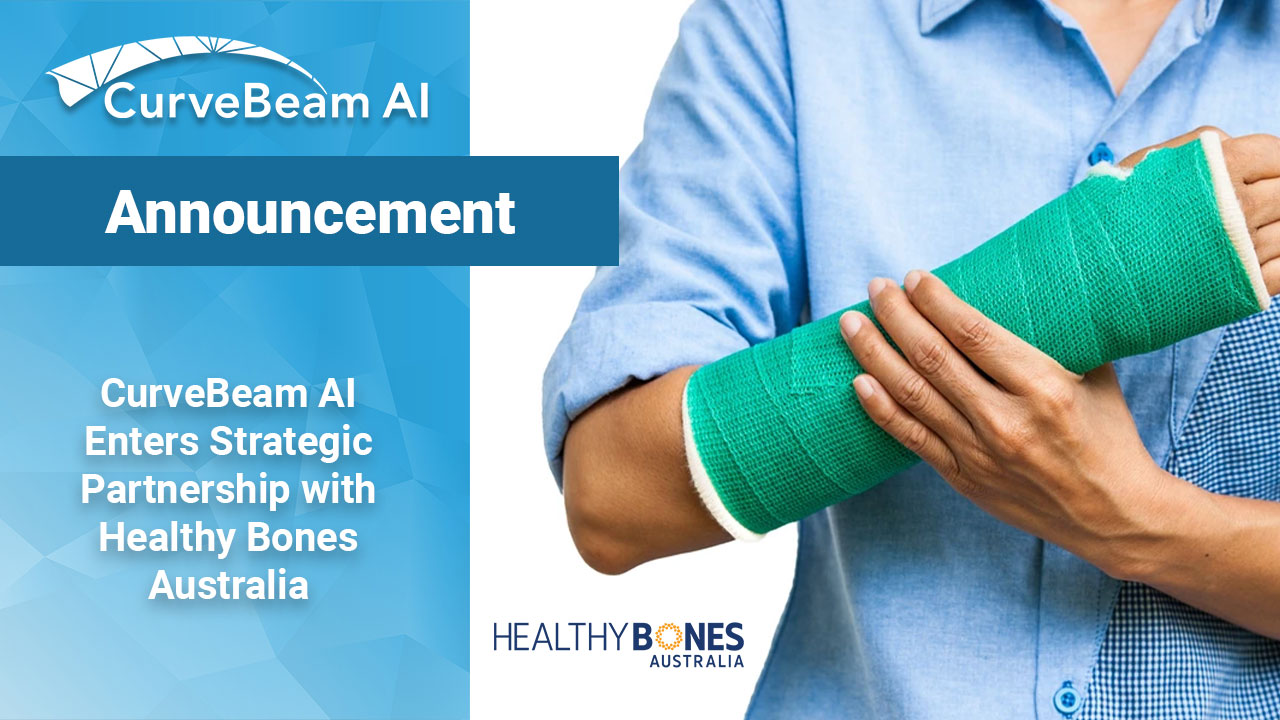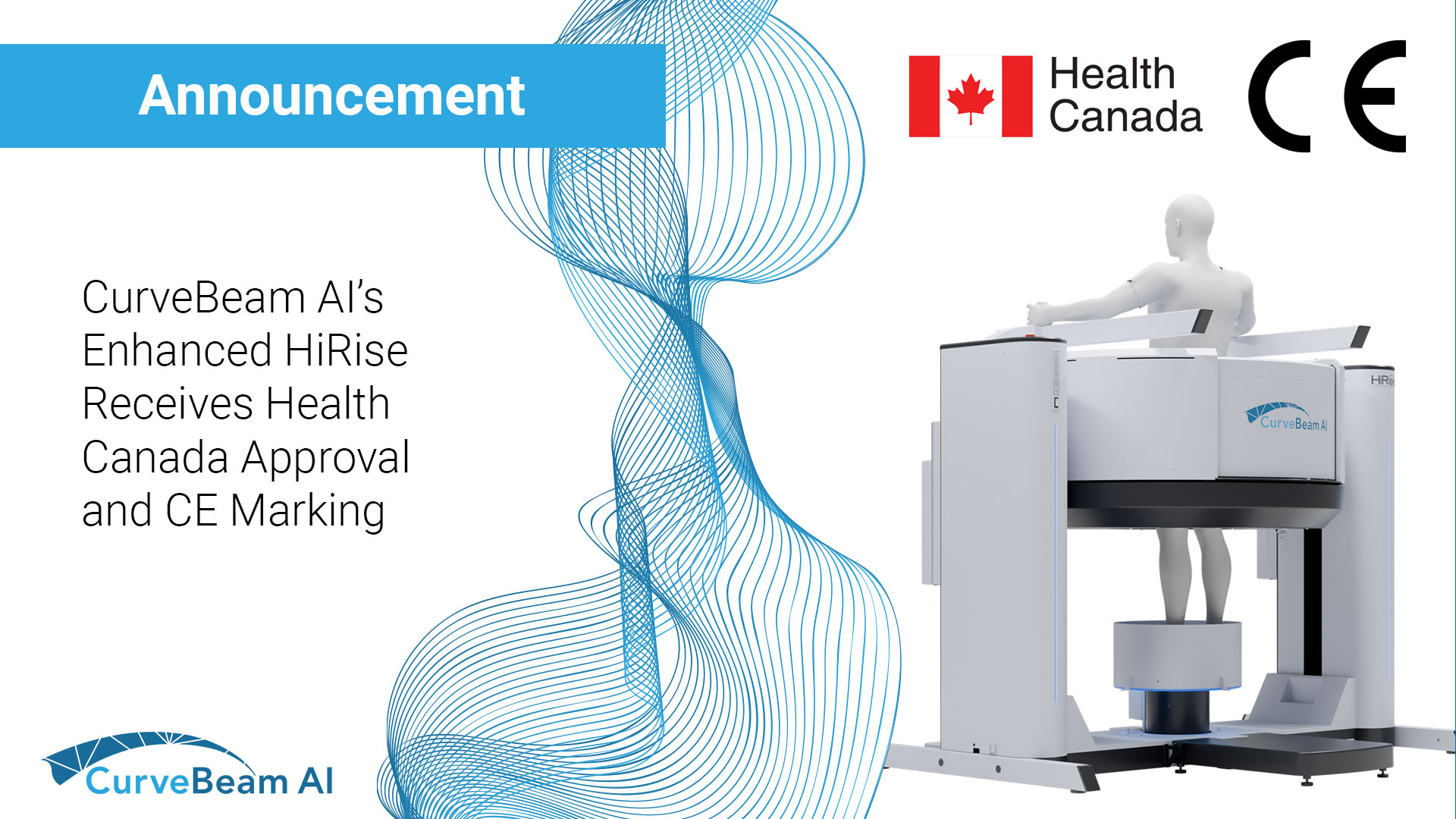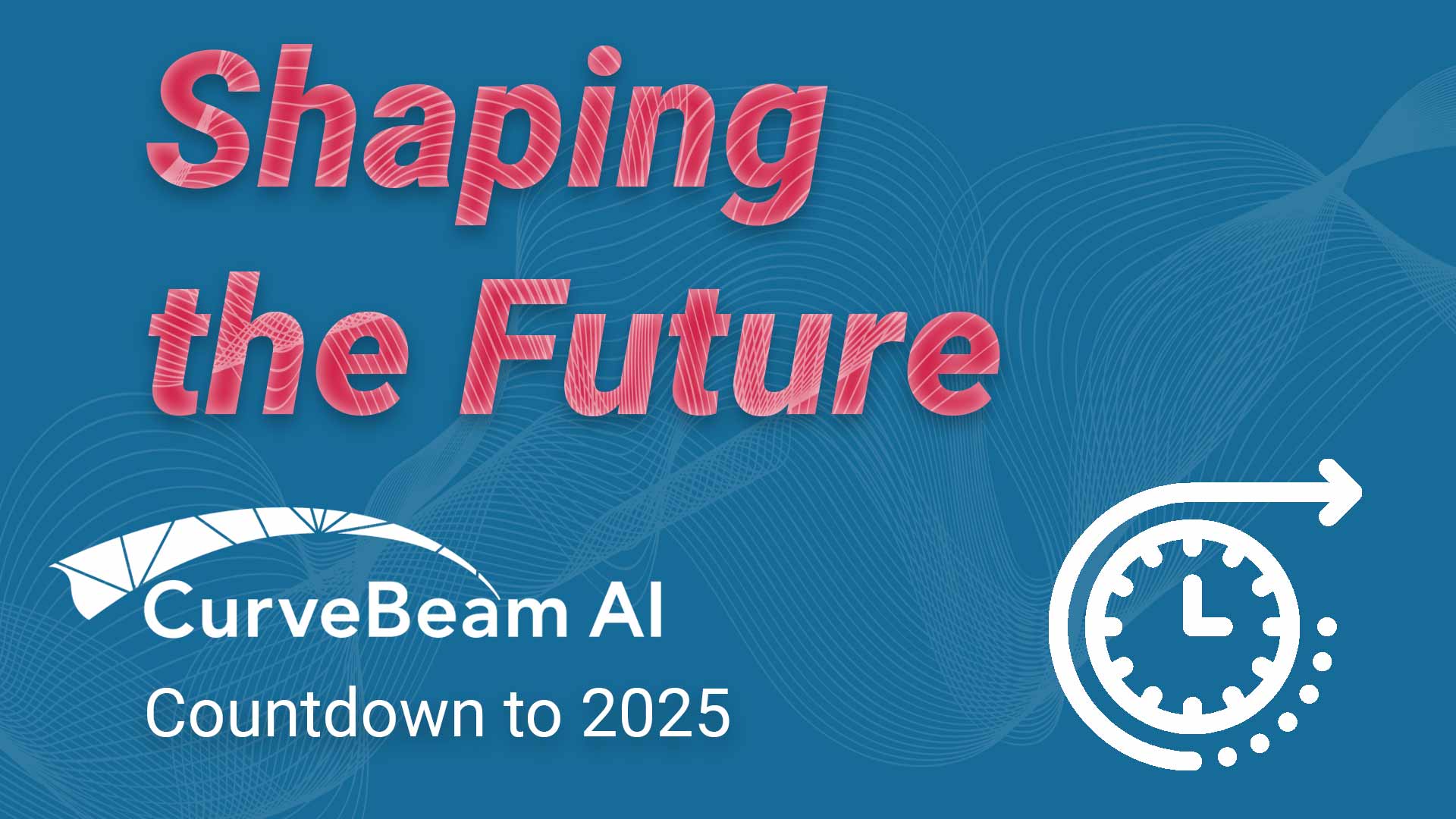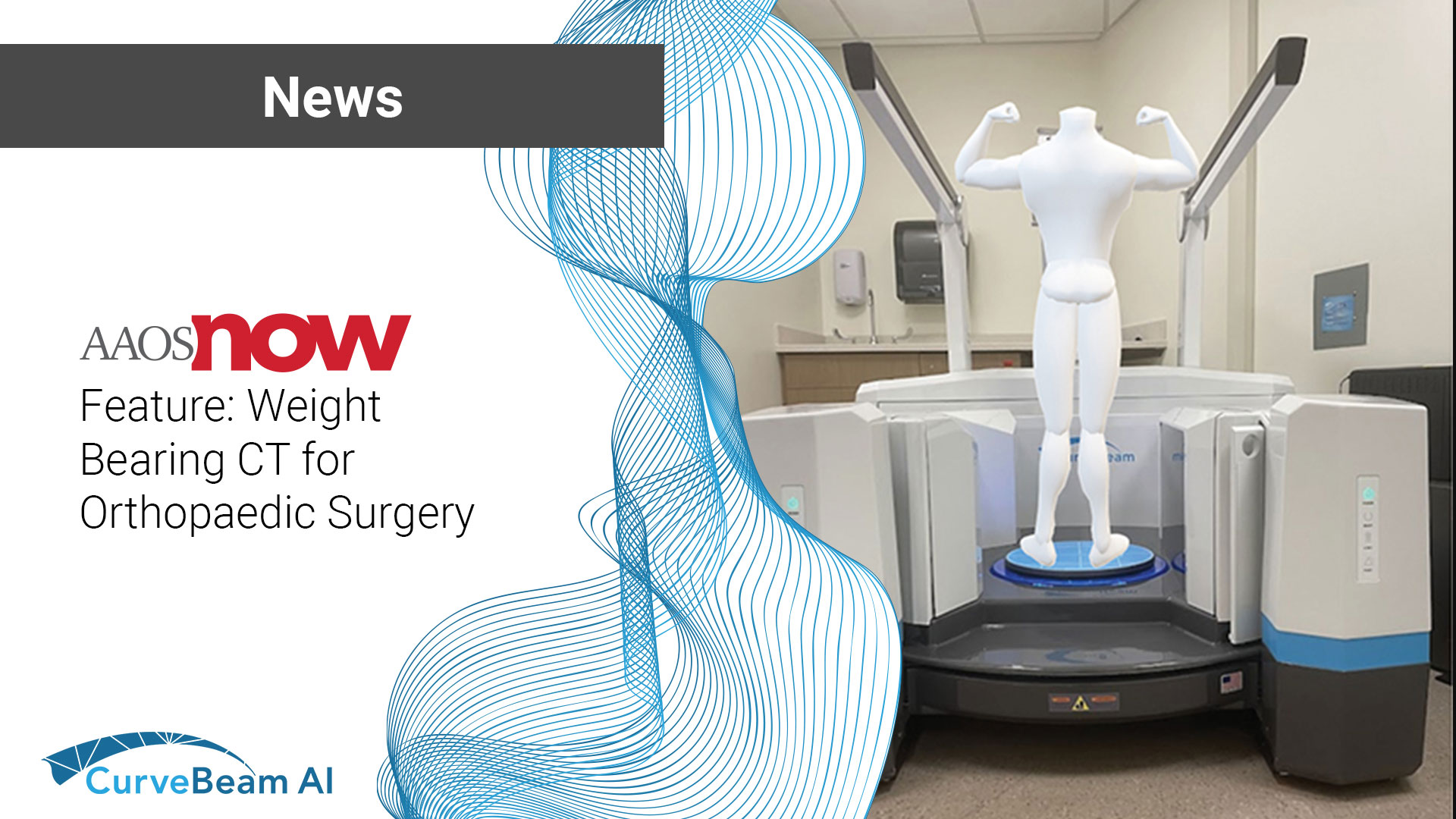Hatfield, PA — July 1, 2025 — CurveBeam AI, a global leader in weight bearing…

CurveBeam AI Enters Strategic Partnership with Healthy Bones Australia
<Australia – October 13, 2022> To mark its 21st anniversary of pioneering bone health in Australia today, Healthy Bones Australia has announced its strategic partnership with CurveBeam AI to develop a breakthrough diagnostic fracture prediction tool. Since its inception, the not-for-profit organization has been championing community and health professional awareness and understanding of the importance of identifying, diagnosing and treating osteoporosis.
The organization is proud of its outstanding achievements to date, and is looking forward to kicking many more goals in the future, according to Healthy Bones Australia Chairman, Professor Peter Ebeling AO, Melbourne,
“Over the past 21 years, Healthy Bones Australia has advanced the importance of protecting our Australian population’s bones. During this time, we’ve witnessed substantial change in the healthcare system’s focus on the detection and treatment of osteoporosis, and community and government understanding of the importance of maintaining healthy bones. As recently as 20 years ago, bone health was a largely overlooked, and untreated area. It is now recognized as an important chronic disease, and a health priority area for Australia,” said Prof Ebeling.
“Importantly however, we recognize there is much more to be done. Within the next five years, our focus is to:
- establish a Fracture Liaison Service (FLS) in every capital city of Australia;
- deliver comprehensive and updated guidelines for GPs, who work at the frontline of osteoporosis management;
- drive half a million Australians aged 50+ to undertake our Know Your Bones online self-assessment (currently sitting at almost 100,000 assessments);
- advocate for broader patient access to osteoporosis diagnosis and treatment; and
- support new and innovative osteoporosis diagnostic opportunities.
“In this regard, I am delighted to announce today, that we are on our way to fulfilling one of our goals, by partnering with CurveBeam AI in the validation of a new diagnostic tool for osteoporosis, following a decade of research.”
CurveBeam AI’s OssView™ software works with high resolution peripheral quantitative computed tomography (HR-pQCT) to calculate an ‘SFS score’ (Structural Fragility Score).
“This new bone diagnostic approach examines the support structure of the bone (bone micro-architecture), not only its density. An OssView™ result, used with Bone Mineral Density (BMD) testing, is expected to greatly assist GPs and Specialists with identifying patients who are at high-risk of fracture, and yet may only have low, or normal bone density on conventional BMD testing.
“On its own, because of its size and ease of mobility, the OssView™ test will also help to improve access for elderly people in remote, rural or nursing home settings, to better inform them, and their doctors, of their fracture risk, to help target treatment to prevent fragility fractures,” said Prof Ebeling.
Given the rising prevalence of osteoporosis in Australia, the pilot study involving this new diagnostic tool could herald ground-breaking results in the early detection of osteoporosis. Research reveals more than 4.74 million Australians over 50 years of age (approximately two-thirds of those aged 50+) are living with poor bone health.1
This year (2022), a fracture is occurring every 2.9 minutes,1 resulting in 183,105 fractures per year.1 Moreover, the projected total cost of poor bone health among Australians aged 50+ years this year is an estimated AUD 3.84 billion.1
“Early diagnosis of osteoporosis is crucial to reducing fracture rates, and their subsequent impacts and costs,” said CEO of Healthy Bones Australia, Greg Lyubomirsky, Sydney. “We need to focus on prevention, which means understanding risk factors for poor bone health, early diagnosis, and appropriate and prompt treatment. This new diagnostic tool, used with BMD testing, can assist Healthy Bones Australia’s ongoing work in generating awareness of the importance of bone health, to ensure all Australians are better protected against sustaining fractures in the future.”
According to University of Melbourne Professor, and Medical Director of CurveBeam AI, Ego Seeman. Melbourne, “This new diagnostic tool provides a new direction for identifying women at risk of breaking a bone in the next year or two, by measuring their bone structure. This early detection will help doctors to treat before a fracture occurs.”
Healthy Bones Australia’s birthday milestone together with the OssView diagnostic pilot announcement is being made today in the lead up to World Osteoporosis Day, scheduled for next Thursday, October 20 – an annual public health day that raises global awareness of the prevention, diagnosis, and treatment of osteoporosis.
“Our 21st anniversary allows us to reflect with pride on our many remarkable achievements to date, including the launch of Australia’s first bone health, self- assessment tool – Know Your Bones – in 2016, a research partnership between Healthy Bones Australia and the Garvan Institute of Medical Research. The tool was developed to help Australian adults understand and self-assess, their potential risk for developing osteoporosis,” said Mr. Lyubomirsky.
Michelle Bridges, TV personality and health and wellness coach, has been the Know Your Bones Ambassador since August 2020, and has served to raise community awareness of the importance of maintaining healthy bones. Healthy Bones Australia has partnered with many other high-profile Australians over its 21-year-long history to help champion this important cause.
TV presenter, journalist and podcaster, Helen Dalley, Sydney, who was appointed Patron of Healthy Bones Australia in 2007, continues to fulfil this important role.
“During my longstanding association with Healthy Bones Australia, the organization has generated much needed information about bone health to help change community awareness about the importance of protecting bone health, and continues to place early detection and treatment of osteoporosis at the forefront of the healthcare system’s focus.”
Over the past 21 years, Healthy Bones Australia has advocated for broader access to osteoporosis treatments, supported 62 Australian bone researchers, with grants totaling AUD 2.5 million (since 2004), and educated Australians about the importance of bone health, by providing national resources for the community, and ensuring broad access via a national website – www.healthybonesaustralia.org.au; toll-free helpline – 1800 242 141, fact sheets, and consumer guides. The organization has also worked closely with General Practitioners, to promote early diagnosis, and with government to better priorities bone health policy.
“I am proud of our many achievements to date, and we are now focusing on innovations, such as this new diagnostic tool, to pave the way for earlier detection, and treatment of osteoporosis,” Mr. Lyubomirsky said.
- Watts, J., Ambimanyi-Ochom, J, & Sander K, Osteoporosis costing all Australians: A new burden of disease analysis 2012-2022. 2013, Osteoporosis Australia.
- Australian Government Department of Health. National Strategic Action Plan for Osteoporosis. 2019 [cited June 2020]; Available from: https://www.health.gov.au/resources/publications/national-strategic-action-plan-for-osteoporosis-2019.
- Better Health Channel, V.S.G. Osteoporosis. [cited Feb, 2021]; Available from: https://www.betterhealth.vic.gov.au/health/conditionsandtreatments/osteoporosis.
- Sözen, T., L. Özışık, and N.Ç. Başaran, An overview and management of osteoporosis. European journal of rheumatology, 2017. 4(1): p. 46-56.
- Healthy Bones Australia, Bone health explained consumer guide – 1st edition, March 2021. [cited June, 2022].
- Royal Australian College of General Practitioners & Osteoporosis Australia, Osteoporosis prevention, diagnosis and management in postmenopausal women and men over 50 years of age. 2017.
- Tatangelo, G., et al., The Cost of Osteoporosis, Osteopenia, and Associated Fractures in Australia in 2017. Journal of Bone and Mineral Research, 2019. 34(4): p. 616-625.
- Unnanuntana, A., et al., The assessment of fracture risk. The Journal of Bone and Joint Surgery. American volume, 2010. 92(3): p. 743-753.
- Pouresmaeili, F., et al., A comprehensive overview on osteoporosis and its risk factors. Therapeutics and clinical risk management, 2018. 14: p. 2029-2049.




